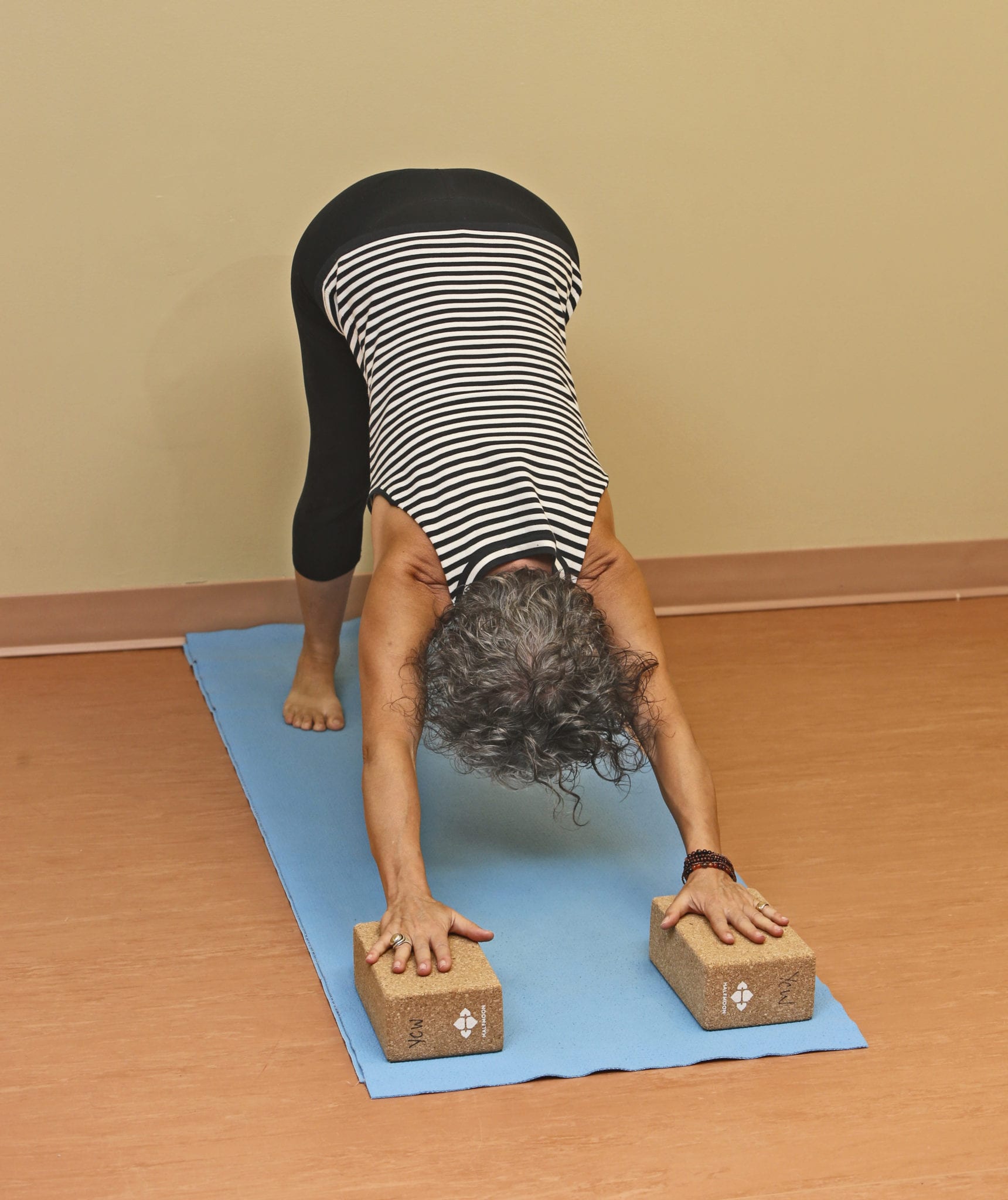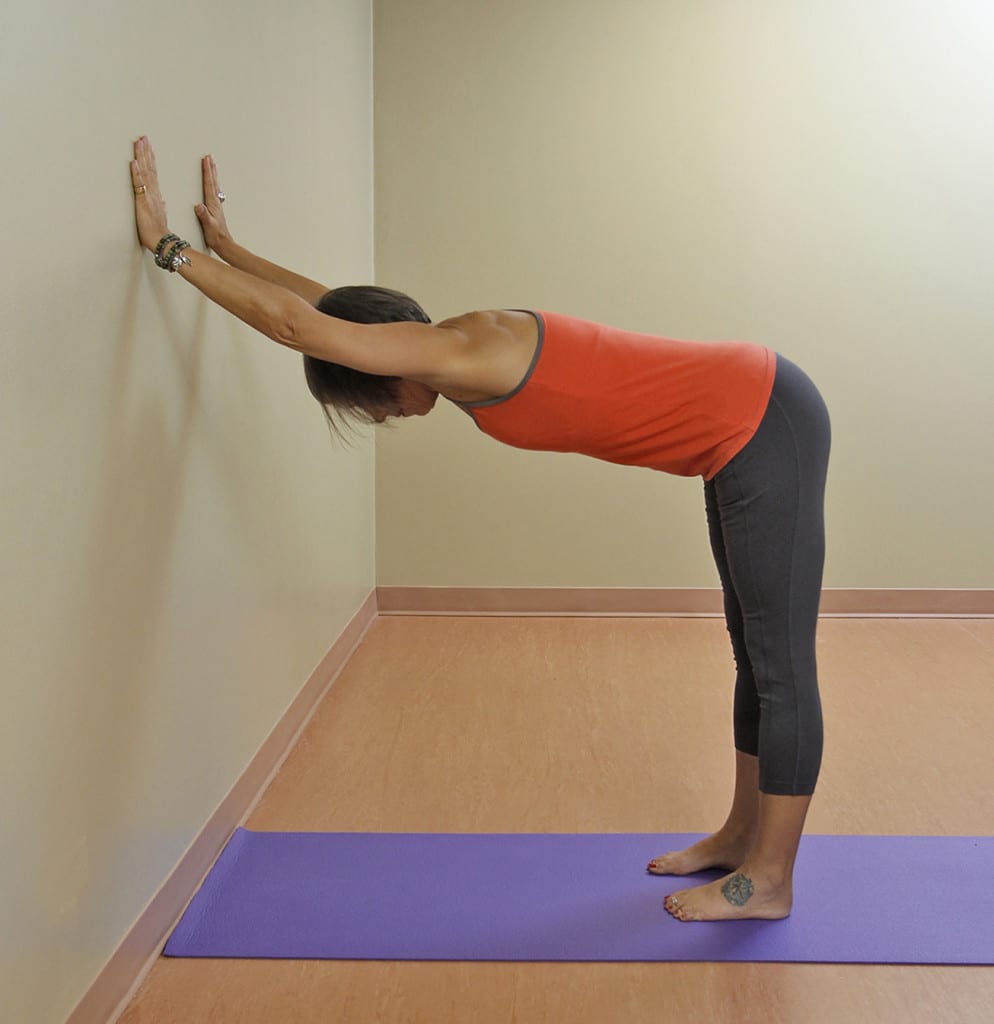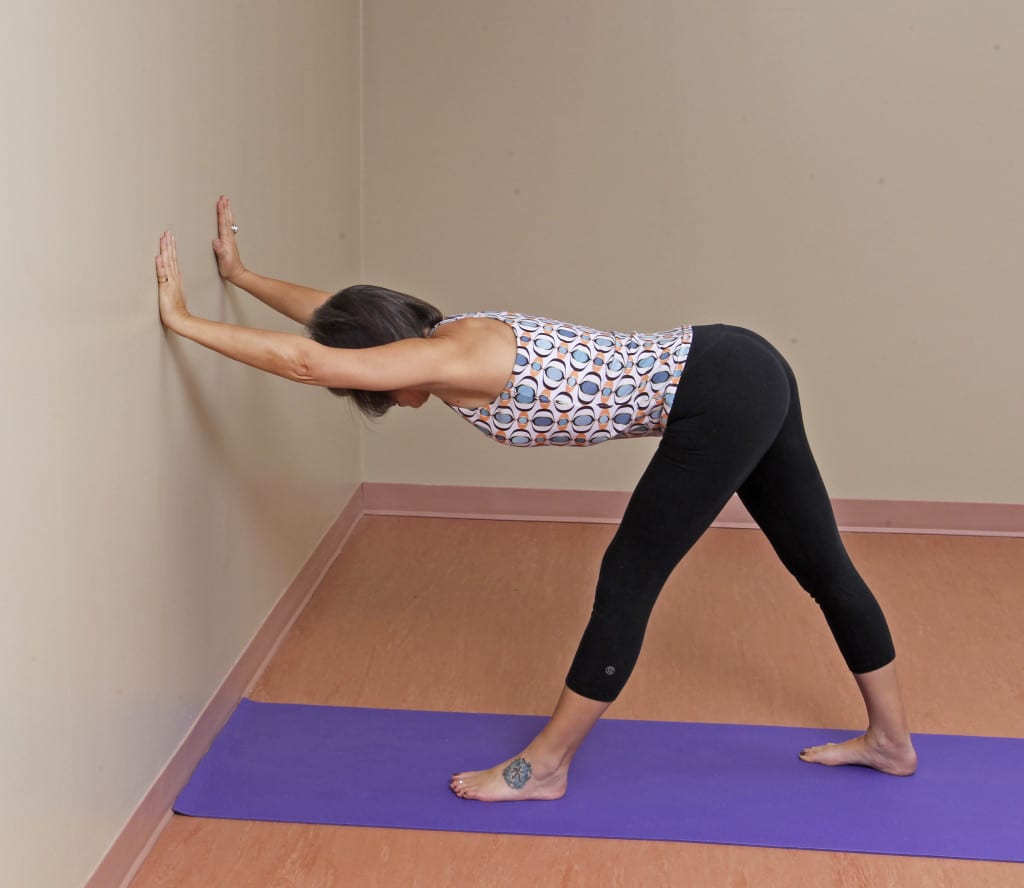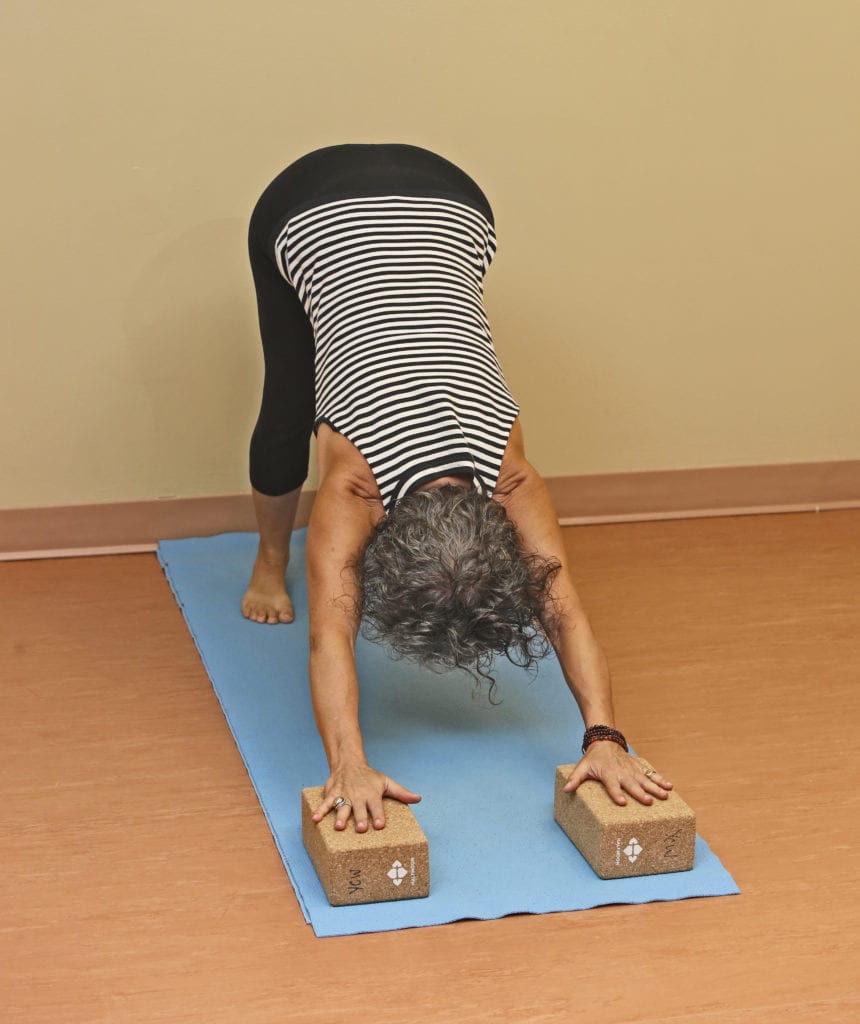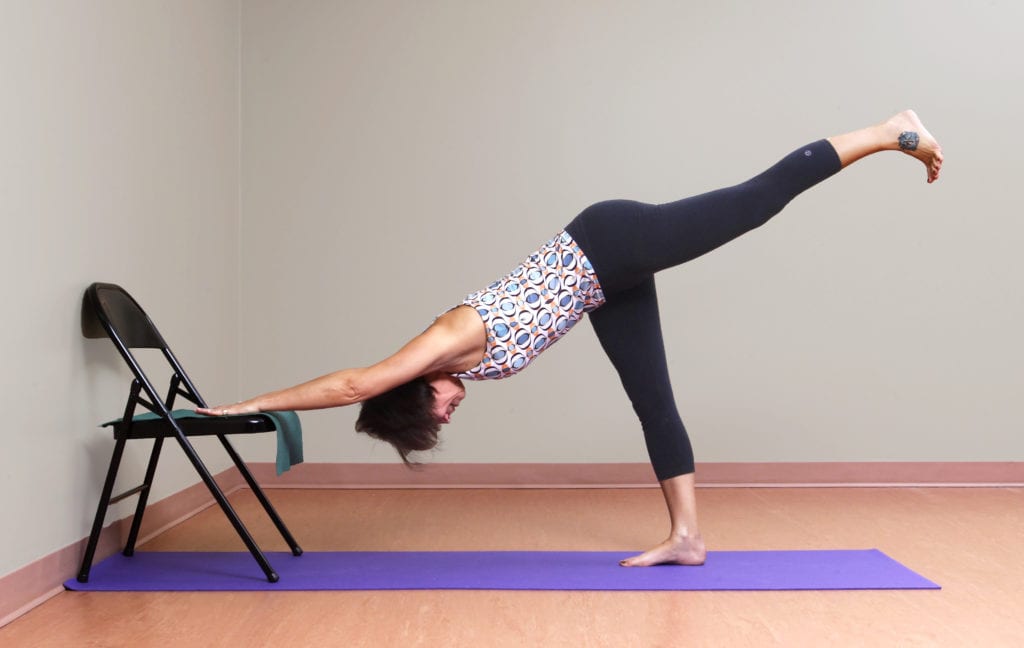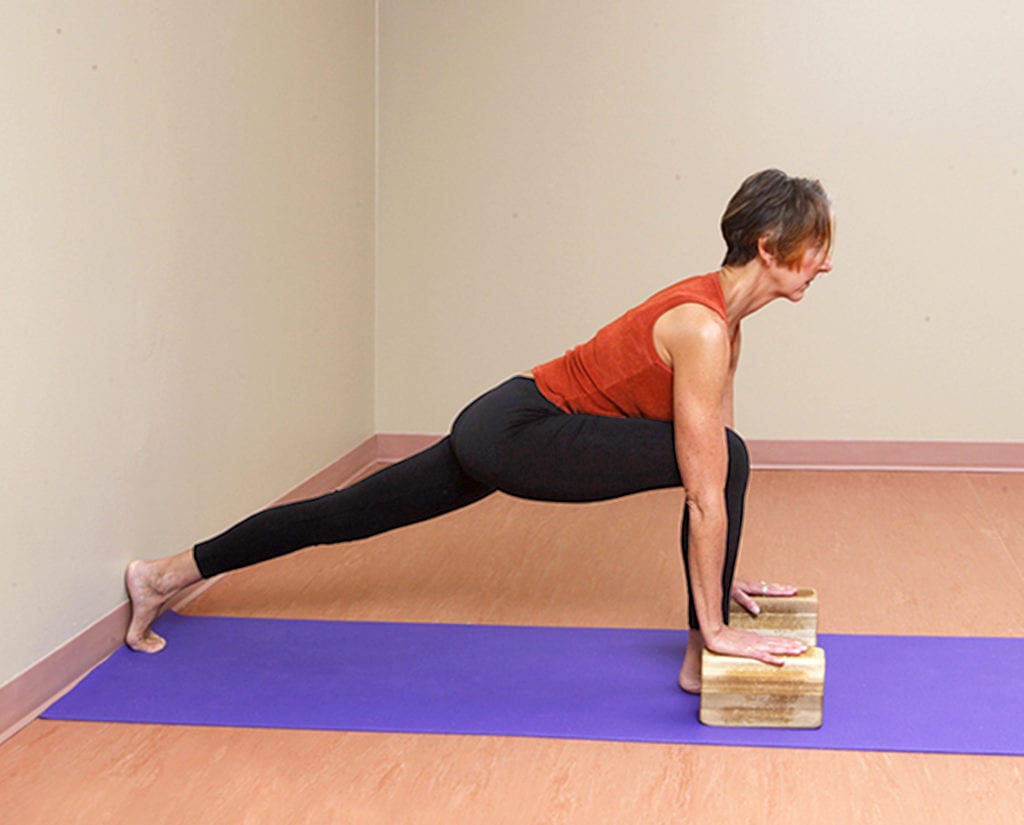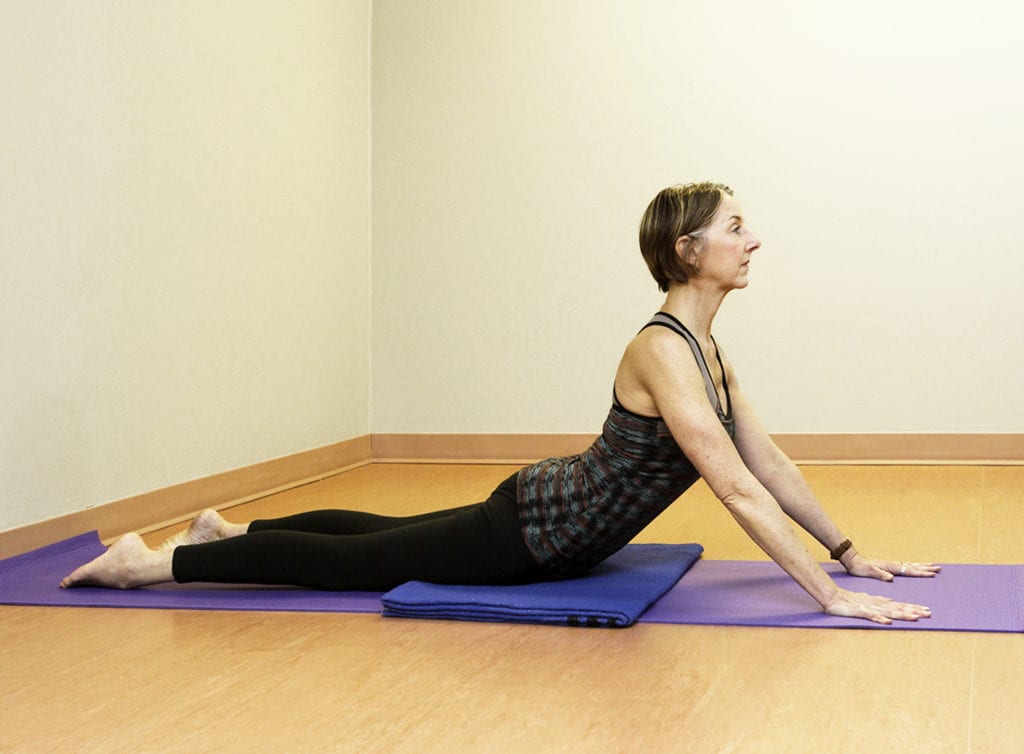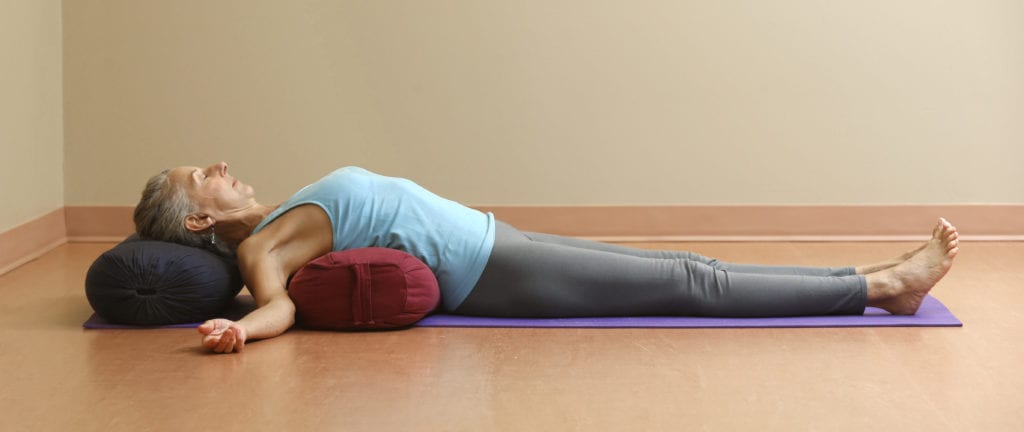Although we may not consciously think so, everyone intuitively understands why it is important to stand evenly on our two feet—when we balance our weight distribution equitably, we do not overwork one side of our body while underworking the other. Nonetheless, this still happens which is why most of us are right- or left-dominant.
What often catches yogis off guard is the same balance principle also applies to our hands. By balancing the weight between our hands, we redistribute even more weight off the feet and hips into the hands, wrists, elbows, shoulders and everywhere in between. Overuse of any joint, such as always using your right arm to carry heavy objects, means we are asking those joints to carry more weight and responsibility than suits their capacity. Such overburdening on hips and knees is why joint replacement has become more and more common.
Even though hip and knee replacements are an increasing trend, surprisingly shoulder tightness and pain are the most common complaints yoga teachers hear from their clients. Unfortunately, already tense shoulders further inhibit us from equally distributing our body weight over our four extremities. Adding to the confusion, tight or painful shoulders have both physical symptoms and emotional sources. The physical characteristic most associated with dysfunctional shoulders is postural slumping often attributed to a more sedentary lifestyle of driving a car and sitting at a computer. On the emotional side, our shoulders and hands were not meant to carry the weight of the world. When we do too much or have too much responsibility — parent, breadwinner, tween chauffeur, elder caregiver, volunteer, homeschooler, etc, etc. — stress sets in and makes itself at home in our upper limbs and shoulders. The giving away all of our time and energy leaves nothing for self-care.
Denying ourselves the proper care we need to maintain our well-being is typically related to an inability to say “No” to what we don’t want and “Yes” to what fulfills us. If this rings true for you, then you have been suppressing your truth. Our truth centre is the Throat Chakra, which lies between the shoulders at the base of the neck. The negative stress of not speaking your truth creates an imbalance and physical tension in the throat and surrounding area — upper lungs, shoulder girdle, neck, upper chest and back. Over time, the shoulders stiffen and round as you irrationally attempt to protect the heart by stifling the truth, and your chest collapses (caves in) impairing your breathing. Fortunately, we can undo all of these dis-eases with a regular yoga and meditation practice.
The yoga actions below will begin your physical journey back to self-caring by grounding down into the Earth with our hands and feet. This very simple act slows us down and rebalances our body weight and emotions. In addition, positive self-talk in the form of affirmations and chanting rebalance the throat chakra by holding firm what we want for ourselves. We encourage you to choose or write a new positive affirmation each day and repeat it throughout the day, during an asana practice or meditation, to keep you focused and positive. Below are three affirmations you can try.
I care for myself first, so I have the capacity to care for others.
I think and speak only positive words to myself and to others.
I speak my truth and create a healthy, happy life for me, from me, for all.
Action: Press evenly into the four corners of your palms: 1) the mounds at the base of the index fingers and the baby fingers, 2) the inner corners of the heels of the palms (lower thumb mounds) and the outer corners of the heels of the palms.
For more advanced practitioners, “draw” a line from your index finger and thumb mounds, along your inner arms and armpits down the inner edges of your shoulder blades. “Draw” another line from your baby finger mound, along your outer arms and armpits into the outer edges of your shoulder blades. As you press into the inner and outer edges of your hands, notice how your arms lengthen and your shoulder blades stabilize.
WALL STRETCH
Stand close to and facing the wall. Place your palms at shoulder height. Press into the four corners of the palms, step back folding at your hip creases and straightening your arms. Check to see your feet are under your hips. Find the action. Have you balanced your body weight between your hands and feet? Hold the pose for 5-10 breaths, then step forward and release your arms. Rest your forehead into the wall for a few moments.
ARDHA PARSVOTTANASANA (Half Intense Side Extension pose)
Stand your arm’s length away and facing the wall. Keep your left foot where it is and step your right foot back turning it out slightly. Inhale, raise your arms overhead; exhale, fold at your hip creases and place your palms onto the wall. Find the action. Have you balanced your body weight between your hands and feet? Hold the pose for 5-10 breaths, then step your right foot forward and come to Tadasana. Repeat on the other side.
ADHO MUKHA SVANASANA (Downward-Facing Dog)
Start in an all-fours position with toes tucked. Find the action. Inhale, press into your hands and toes; exhale, move into the pose by lifting your hips upward and straightening both legs and arms. Stay for 5-10 breaths while you find the action. Have you balanced your body weight between your hands and feet?
EKA PADA ADHO MUKHA SVANASANA (One-Legged Downward-Facing Dog)
Stand close to a wall-supported chair and place your palms onto the chair seat. Do not grip the chair seat edges (a piece of sticky mat will stop your hands from slipping). Walk back folding at your hip creases and come into downward-facing dog. Find the action equally into both hands and maintain it as you lift one leg. Hold for a few breaths. Can you balance your body weight between your hands and foot? Then release your lifted leg, walk forward, stand and rest. Repeat on the other side.
HIGH LUNGE
Start by standing toward the front edge of your mat. Place your palms onto blocks as you step your left foot back placing your heel into the wall. Your right leg is in a right angle with its ankle under your knee. Find the action as you hold the pose for 5-10 breaths. Have you balanced your body weight between your hands and feet? Step your back foot up alongside your front foot and then repeat on the other side.
BHUJANGASANA (Cobra)
Begin lying in a face-down position. Place your hands alongside your head or shoulders. (Adjust the position of your hands forward or back to suit your backbend ability.) As you press into your hands, exhale and straighten your arms. Keep your pelvis resting on the floor. Hold for 5 – 10 breaths.
SAVASANA MOUNTAIN BROOK VARIATION (Corpse pose Mountain Brook variation)
Set up two horizontal bolsters with enough space between them for your shoulders and arms to rest and release. You may also use rolled blankets or towels to accommodate your body. Ensure you are comfortable. Rest for 3-5 minutes.
 Winnipeggers Helen Maupin (www.righttojoy.com) and Candace Propp (www.natureofcontentment.com) are certified senior yoga teachers and authors of the Creating Space: Yoga Actions book series. To purchase these print or ebooks, visit here. For yoga teacher training (200- & 500-hour) with them and Stacy Schroder or to purchase the Yoga Actions teacher training facilitator manuals and student handbooks contact www.sereneyogastudio.com.
Winnipeggers Helen Maupin (www.righttojoy.com) and Candace Propp (www.natureofcontentment.com) are certified senior yoga teachers and authors of the Creating Space: Yoga Actions book series. To purchase these print or ebooks, visit here. For yoga teacher training (200- & 500-hour) with them and Stacy Schroder or to purchase the Yoga Actions teacher training facilitator manuals and student handbooks contact www.sereneyogastudio.com.
Photos by Wayne Glowacki.

